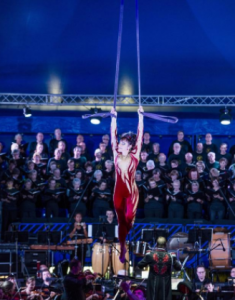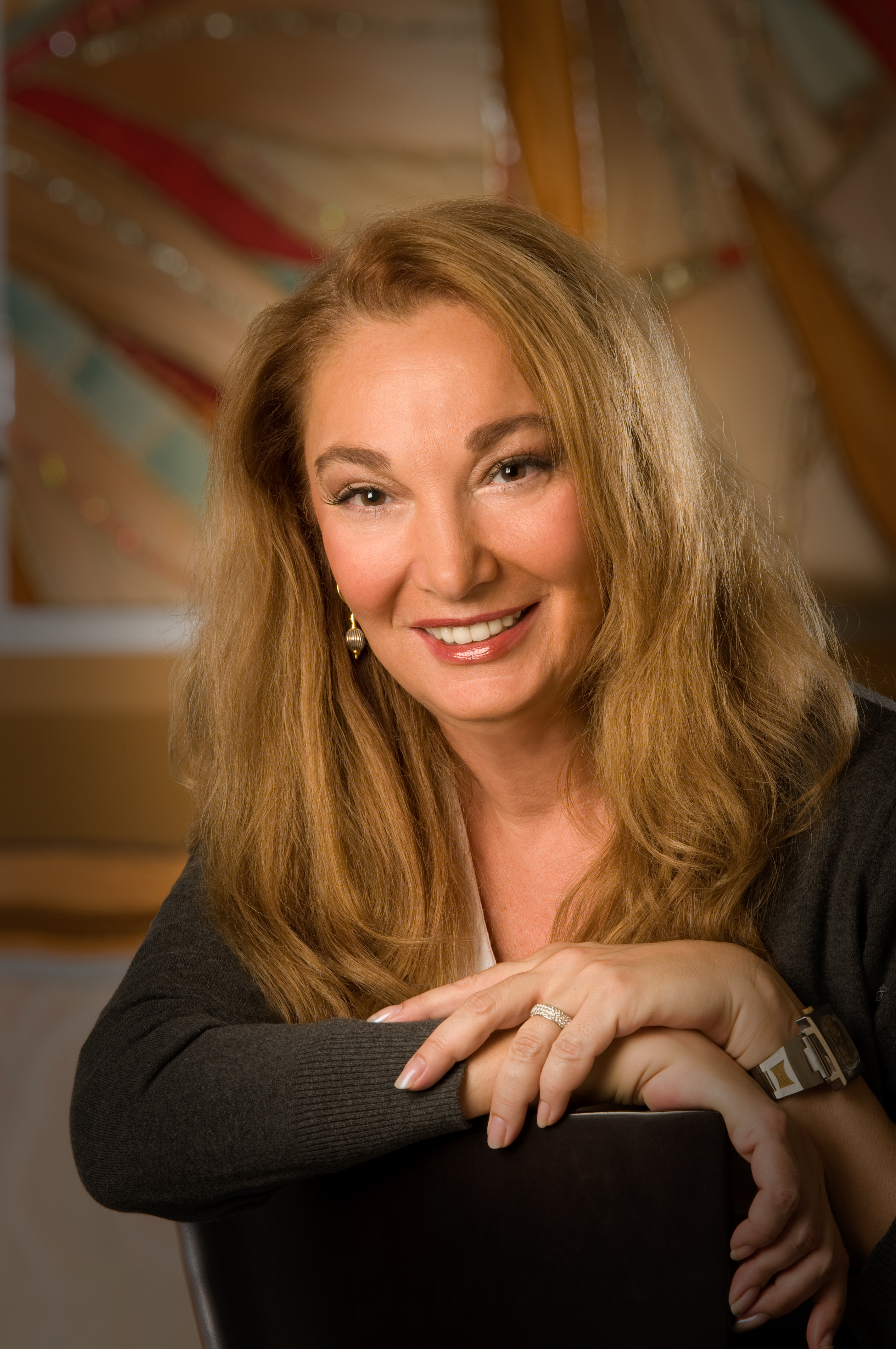 Washington is often referred to disparagingly as a circus, but for at least a couple of weeks this summer, it actually will be true. Circus Sarasota is setting up its big top on the National Mall where the 50th Smithsonian Folklife Festival celebrates the world of circus in all its forms.
Washington is often referred to disparagingly as a circus, but for at least a couple of weeks this summer, it actually will be true. Circus Sarasota is setting up its big top on the National Mall where the 50th Smithsonian Folklife Festival celebrates the world of circus in all its forms.
There will be daily performances by professional and amateur performers of all ages, exhibits highlighting how productions are mounted and the history and tradition of multi-generations of circus families — and a chance for visitors to meet performers and see troupes from across the country.
|
___________________________________________________ 2017 Smithsonian Folklife Festival Wednesday, June 28th through July 9 (with a day off on July 5) on the National Mall in Washington, D.C. Circus Sarasota and the Sailor Circus will be among dozens of professional and youth circuses performing. festival.si.edu |
If the weather cooperates, organizers say this year’s festival could attract more than 1 million visitors.
The celebration begins just weeks after the closing of the venerable Ringling Bros. and Barnum & Bailey Circus, and makes the case that the circus is alive and well in all corners of the United States.
“The circus is about celebration, about the big moments of joy and delight, and that fits what we hope will happen in our 50th Celebration of the Folklife festival,” said Sabrina Motley, director of the Smithsonian Folklife Festival at the Center for Folklife and Cultural Heritage.
Preston Scott, a part-time Sarasota resident who is curator for this year’s event, said it takes three to four years to pull together each festival, a tradition that began in 1967 with a focus on performance. Since then, the festival, which celebrates folk culture and varies thematically from ever year, has highlighted various states, countries, cultures, foods and professions.
The event takes over a long stretch of the National Mall outside the Smithsonian Castle, alongside the Arts and Industries Building and the Hirschorn Museum.
Dominating this year’s landscape will be the large Circus Sarasota tent that has welcomed thousands of visitors to winter performances on its home turf in Florida for the last 20 years. Pedro Reis, who founded what is now known as the Circus Arts Conservatory with his aerialist wife, Dolly Jacobs, is actively involved in planning for this year’s event and coordinating performances in the tent.
“When people come out of the Metro station, they will immediately see our big top,” Reis said.
The tent will host four performances each day, including daytime shows by the Sarasota Sailor Circus, the oldest youth circus in the country, and other youth and professional troupes. At night, Circus Sarasota will perform with an international array of talent during the first few days of the festival, and then will reprise this year’s Cirque des Voix show, which matches circus performers with an orchestra and the large vocal ensemble Key Chorale, conducted by Joseph Caulkins.
Jacobs, who received a 2015 National Endowment for the Arts Heritage Award — considered the highest honor in the folk and traditional arts — will be featured in all the Circus Sarasota-produced performances.
The tent also will be used for performances by other professional and youth circuses from around the country, including Circus Juventas, based in St. Paul, Minnesota, which was founded by Dan and Betty Butler, who met while performing in the Sarasota Sailor Circus.
Circus Sarasota clowns Karen Bell and Robin Eurich will set up a variation of their Marvelous, Miraculous Circus Machine, which uses circus arts to teach students about science.
Celebrating people
Scott said he initially had the idea of doing something about the “life and work of circus people, the grassroots creativity of these folks — not on a big show, the big companies — but from the grassroots, the people who make it all work,” he said. “Many of them are legacy families whose ancestors, grandfathers or great grandparents came from foreign countries. But they live here now.”
The Smithsonian had never done any kind of serious exploration of the circus before. “The question was, is there enough going on around the country to support and sustain a national program? The theory is that circus is on the way out the door.”
Despite the closing of the Greatest Show on Earth, that turned out not to be the case.
“We found some kind of programming in all 50 states,” Scott said, everything from Circus Smirkus in Vermont to the Circus Center in San Francisco.
“We’re discovering all these stories that were diverse and really interesting and with people who had one foot in both worlds. We always look for diversity, different ways of telling a story, showing different sides of the prism. We want to give people different points of view about a topic. This one has it in spades.”
A few years ago, there were only a handful of youth circuses across the country; now there are more than 250. A salute to youth circus will be held on the festival’s final day to give all the young performers “their moment in the big top. That’s our way of concluding the festival with a launch to the future,” Scott said.
The Circus Arts Conservatory is bringing dozens of performers and backstage workers and many supporters, who will be among the more than 400 participants in the festival. “That means an artist or a rigger or a person with a circus heritage,” Scott said. By comparison, when he curated the 2008 festival focusing on Bhutan, there were 150 participants.
A giant display
Exhibits and tents will stretch five blocks along the Mall, running the length of two football fields, with the Washington Monument and U.S. Capitol building in the distance on either end.
“Most everything happens outdoors. That was the intention when the festival started in 1967 — to use the Mall as a museum without walls, a living, breathing museum,” Scott said.
There will be indoor displays of aerial arts, where visitors can watch rehearsals and a circus school space will be set up inside the Arts and Industries Building.
“Kids will go crazy when they see the rigging,” Scott said.
There are 17 venues, including open-air aerial performances. Tino Wallenda and other family members are bringing a high wire and trapeze apparatus to perform in an outdoor circus ring that will be shared by different troupes. Wallenda also will set up a low-wire for demonstrations and master workshops for student performers.
There will be clown alley, juggling demonstrations, giant puppets, multi-purpose stages and a cookhouse for people “to learn about the history of food and circus culture and some amazing circus cooks. Most people don’t think about food at the circus except cotton candy. But we look at how do you feed all the performers. Where do the recipes come from?” Scott said.
A new view of circus
Deborah Walk — assistant director of legacy and circus at The Ringling, one of the festival presenters along with the Circus Arts Conservatory — said this year’s theme “was one of those breaking points where you could see the circus moving from something off to the side to gaining some of the respect that I think it deserves, not only as a profession, but also its cultural influence for this country. To me, it was something that I just felt The Ringling had to participate in.”
Walk will attend the festival, which begins with opening ceremonies June 28 and continues (with a day off July 5) through July 9. There also will be panel discussions on the past and future of the circus in the festival’s final days.
Dan Butler, who walked the high wire with his future wife at Sailor Circus, first started thinking about forming a youth circus program after attending a 1994 Sailor Circus reunion and performing his old hand-balancing and juggling acts in what’s affectionately known as the “Has-Been Show.”
The event transformed the Butlers’ lives. The director of a new recreation center two blocks from their home liked the idea of a youth circus program, and now Circus Juventas is in its 23rd year and has become the largest youth circus in the country with 1,000 full-time students and 40 employees. It will present its annual Cirque Nouveau show in Washington.
He said being asked to take part in the Smithsonian festival “was our greatest honor.”
Butler said there has been a renaissance in world circus with such groups as Cirque du Soleil, Cirque Ingenieux, Cirque Eloize and the Bindlestiff Family Circus, which have fueled an increasing popularity in youth circus programs.
“The traditions of the circus are really alive. For me, it’s a real tragedy that one of the oldest businesses in America — a 136-year-old company like Ringling Bros. — didn’t make it. It’s sad for traditionalists. But the youth circus growth has been explosive because it works. There’s something for everybody, every personality, body type.”
Reis said the festival represents a major change in attitudes toward the circus.
“When we first applied to the NEA for a grant, there was no circus arts category. Today there is. Dolly was the first circus artist ever to be recognized. When I first came to America in 1984, there were maybe three circus schools. Now I think there are 275 schools.
“The Ringling Bros. days may be over, but the circus industry is very much a breathing, living and growing art form. This festival will let people see it as I see it.”
Herald-Tribune June 24, 2017
